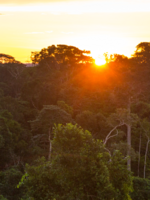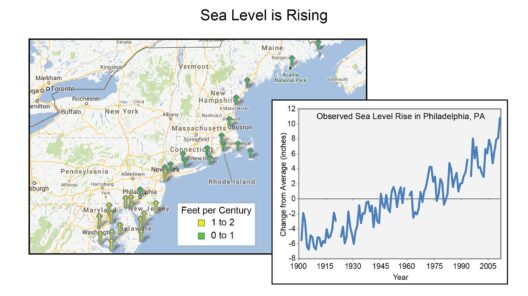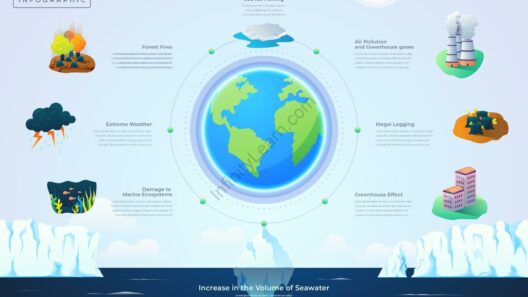Indonesia, often described as the world’s “Green Heart,” is home to some of the most biodiverse and vital forests on the planet. The vibrant tapestry of flora and fauna that thrives within these jungles plays a crucial role in combating climate change. But have you ever wondered what would happen if these irreplaceable ecosystems were lost? The answer is stark and unsettling, posing a significant challenge not just for Indonesia, but for the global community as well.
Indonesia’s forests cover about 93 million hectares, an area that is larger than the entirety of France. These lush landscapes are not just breathtaking; they are also indispensable for carbon sequestration. Forests act as significant carbon sinks, absorbing over 1.5 gigatons of carbon dioxide annually. When trees are cut down or burned, not only is this CO2 storing ability compromised, but massive amounts of carbon are also released into the atmosphere, exacerbating already worrisome climate conditions.
In recent decades, the rapid deforestation driven by palm oil plantations, logging, and agricultural expansion has wrought havoc on these vital ecosystems. The World Wildlife Fund (WWF) has characterized this ongoing loss of forest coverage as an environmental crisis that could have far-reaching consequences for future generations. A playful question arises: Is it possible to protect these forests while still addressing economic demands? This is the challenge that Indonesia faces today.
Indigenous communities and local populations have coexisted with these forests for centuries. Their traditional knowledge about sustainable practices can offer invaluable insight into forest conservation efforts. By integrating agroforestry, which combines traditional farming practices with conservation strategies, these communities can cultivate rice, fruits, and spices without resorting to deforestation. This symbiotic relationship not only sustains their livelihoods but also safeguards the ecosystem’s health.
Indonesia is also making strides in formalizing its commitment to sustainability through international agreements. The nation has set ambitious targets in line with the Paris Agreement, aiming to reduce its greenhouse gas emissions by 29% unconditionally and up to 41% with international assistance by 2030. Ambitious as these goals are, achieving them will require robust enforcement, enhanced monitoring, and engaged public participation. Could these aspirations be fulfilled, or do they remain distant dreams amid ongoing developmental pressures?
Another innovative approach being explored is the implementation of payment for ecosystem services (PES). This model compensates local communities for their role in preserving forests. PES can provide an alternative revenue stream for people who might otherwise deforest land for immediate gains. As both a sustainability initiative and a poverty alleviation strategy, PES embodies a dual advantage that addresses the intricate socioeconomic layers affecting Indonesia’s forests.
In tandem with local efforts, international collaboration is crucial. The Jakarta-based REDD+ (Reducing Emissions from Deforestation and Forest Degradation) initiative offers financial incentives to countries that prioritize forest preservation. By participating actively in REDD+, Indonesia could attract funding and technical support from around the globe. However, it remains critical to ensure that such initiatives are equitable and respect the rights of local communities, making transparency an absolute necessity.
Moreover, the role of technology in forest conservation is undeniable. Drones and satellite imagery allow for real-time monitoring of deforestation. These tools can detect illegal logging and land encroachment, enabling authorities to act swiftly. With the rise of Artificial Intelligence (AI) and remote sensing technologies, Indonesia stands a greater chance of safeguarding its forests than ever before. But does this reliance on technology risk overshadowing the vital knowledge held by Indigenous peoples? This question deserves careful consideration.
In light of climate change, Indonesia’s efforts cannot solely focus on mitigation through forest conservation. They must also incorporate adaptation strategies that enhance resilience against climate-induced impacts. Coastal communities in Indonesia are particularly vulnerable to rising sea levels. Nature-based solutions, such as restoring mangroves or enhancing coastal forests, could serve to buffer against climate-induced storm surges while also providing critical habitats for diverse marine life.
Education is another indispensable component of this multifaceted approach. Creating awareness about the intrinsic value of forests among local communities, policymakers, and the international public is vital. Educational campaigns can foster a deeper appreciation of Indonesia’s forests and galvanize collective action towards their preservation. As global citizens, the question we must ask ourselves is: Are we doing enough to encourage responsible consumption that supports sustainable practices in Indonesia and beyond?
Indonesia’s forests are indeed the lungs of the Earth, a breathtaking sanctuary teeming with life. As the nation navigates the complex interplay of economic development and environmental sustainability, the stakes could not be higher. Balancing the urgent needs of its population with pressing climate realities is a formidable challenge, one that will require innovation, collaboration, and unwavering commitment.
Ultimately, the future of Indonesia’s Green Heart remains in the balance. It is a conundrum filled with both significant challenges and boundless opportunities. Our collective responsibility as global citizens is to engage, advocate, and champion the preservation of these irreplaceable ecosystems, ensuring that we not only combat climate change but also secure a viable future for generations to come. Shall we rise to the occasion and protect what remains of Indonesia’s verdant treasure? Only time will tell.







